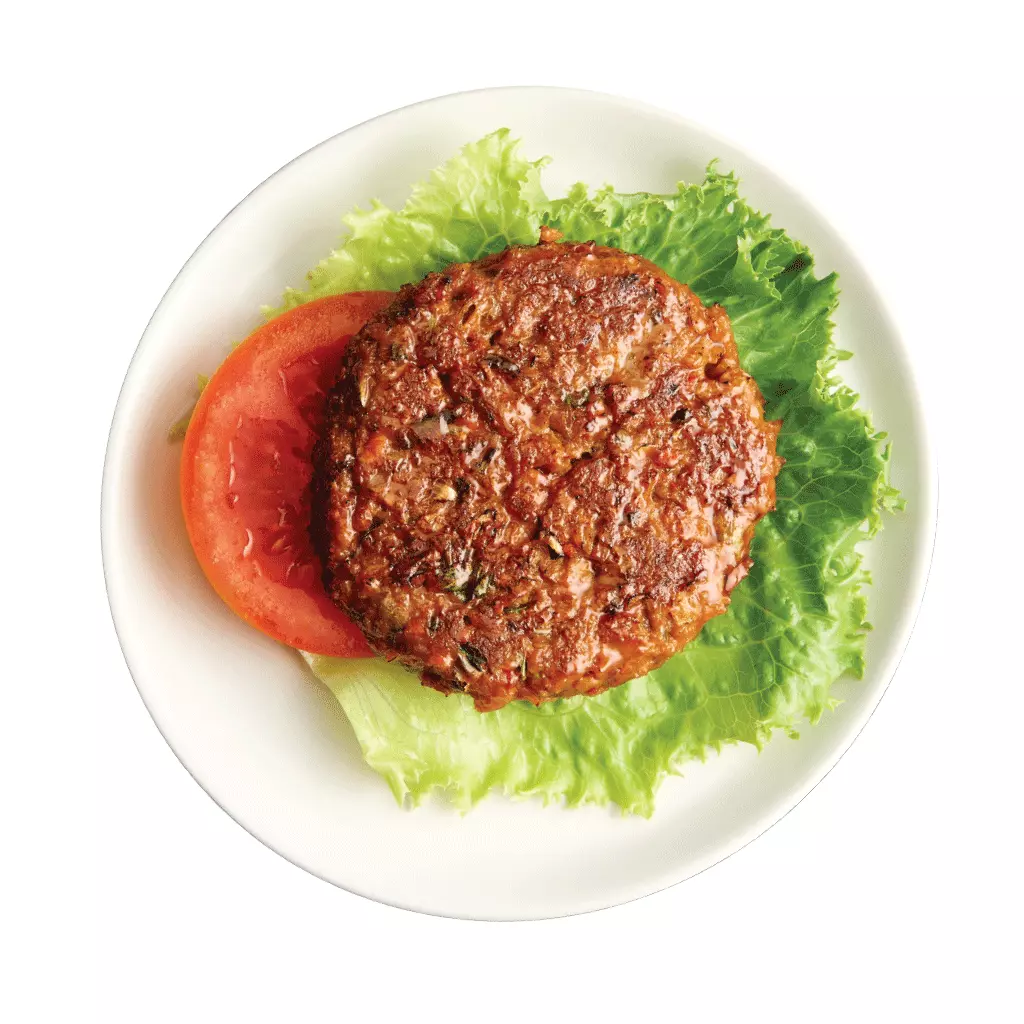Emotional eating is a term that describes the act of using food as a way to manage emotions, rather than eating for hunger. It’s a common human experience and when becomes a frequent response to stress or sadness, it often leads to unhealthy eating patterns and as a result, weight gain. This article looks into the psychological underpinnings of emotional eating, exploring why we turn to food for comfort and how we can develop healthier coping mechanisms.
Understanding Emotional Eating
When we think of hunger, we often think of a simple physiological need—a signal from our bodies that it’s time to refuel. Yet, there’s another type of hunger that’s not about the body’s need for energy but rather the soul’s need for comfort: emotional hunger.
Emotional eating is a way to suppress or soothe negative emotions. It is often triggered by emotions such as stress, anger, fear, boredom, sadness, and loneliness. Major life events or the hassles of daily life that can trigger negative emotions, leading to this behavior and disrupt your weight-loss efforts. Examples of these triggers might include:
- Relationship conflicts
- Work stress
- Family issues
- Fatigue
- Financial pressures
- Health problems
Unlike physical hunger, emotional hunger isn’t satisfied once you’re physically full. You keep wanting more, often eating unconsciously, until you’re uncomfortably full. It also commonly leads to consuming foods that are high in sugar, fats, and calories.
Understanding that emotional eating is a typical stress response can help you feel less alone in your experience and more compassionate towards yourself as you work towards developing healthier eating habits. This section is the foundation for the rest of the blog, setting the stage for deeper discussions about triggers, impacts, and strategies for overcoming emotional eating.
The complexity of emotional eating lies in its ties to both physiological and psychological processes. It’s an intricate dance between the mind and the body, influenced by our neurochemistry and emotional state. When we eat in response to our feelings, we are often trying to fill an emotional void with food—a void that food can never truly fill.
The Emotional Brain and Food
The human brain is wired to seek pleasure and avoid pain, and food—particularly those high in sugar, salt, and fat—can trigger a rush of dopamine, the same neurotransmitter that is stimulated by addictive drugs. This dopamine release can create a powerful reward loop, compelling us to turn to food during times of emotional distress.
When we’re stressed, our bodies produce the hormone cortisol, which can increase appetite and cravings for sugary, fatty foods. These foods seem to have a feedback effect that dampens stress-related responses and emotions, creating a link between stress relief and eating.
Moreover, certain foods can have a temporary mood-boosting effect, making them a go-to method for self-soothing. Carbohydrates, for instance, increase the production of serotonin, a hormone that enhances mood and relaxation.
Signs You Might Be an Emotional Eater
Being able to distinguish between emotional and physical hunger is crucial for identifying emotional eating. Here are some hallmarks of emotional hunger:
- Sudden Onset: Emotional hunger arises suddenly and feels urgent, while physical hunger comes on gradually.
- Specific Cravings: When you’re eating to fill an emotional need, you’re more likely to crave specific comfort foods.
- Above the Neck Hunger: Emotional hunger starts in the mind—not the stomach. You might crave the taste, texture, and smell of food without any physical hunger cues.
- Unrelated to Time: Emotional eating can occur regardless of your last meal, often independent of meal times or physical needs.
- Accompanied by Emotional Distress: Emotional hunger often coincides with feelings of stress, anxiety, or sadness.
- Mindless Eating: Eating without awareness, often not even tasting the food after the first few bites.
- Feelings of Guilt: Unlike eating to satisfy physical hunger, emotional eating is often followed by guilt or shame.
Emotional Eating vs. Mindful Eating
Contrasting emotional eating with mindful eating helps in understanding the former.
Mindful eating involves paying full attention to the experience of eating and drinking, both inside and outside the body. It’s about noticing the colors, smells, textures, flavors, temperatures, and even the sounds of our food. It is eating with intention and attention, where the goal is to engage in a nonjudgmental awareness of physical and emotional cues, making choices that support health and well-being.
The Role of Cultural and Familial Influences
Our relationship with food is often shaped early in life and is influenced by our family environment and cultural background. For many, food is synonymous with love, comfort, or reward, setting the stage for emotional eating patterns that can last into adulthood. Recognizing these patterns can be a critical step toward making changes.
By understanding what emotional eating is, what triggers it, and how it differs from physical hunger, individuals can start to identify their own patterns and begin the journey toward healthier coping strategies. This understanding is the cornerstone of developing a better relationship with food and with one’s emotions.
The Triggers of Emotional Eating
Emotional eating, a complex and often misunderstood behavior is influenced by an array of triggers—psychological, environmental, and social. Understanding these triggers is not only about recognizing the patterns of emotional eating but also about learning to navigate the intricate landscape of our emotional world without relying on food as the compass.
Stress: The Primary Culprit
Stress, the body’s response to any demand or challenge, can significantly increase the likelihood of emotional eating.
When stressed, our body produces the hormone cortisol, which has been shown to heighten the appetite, particularly for foods high in sugar and fat. These “comfort foods” provide temporary relief from stress by increasing levels of serotonin, a neurotransmitter that induces feelings of well-being and happiness.
The relief is often short-lived, leading to a cycle where stress begets eating, and eating begets more stress, particularly as the physical consequences of overeating take their toll.
Emotional Void: Eating for Comfort
For many, food has become a companion that offers solace when feelings of loneliness, sadness, or boredom creep in. This can be particularly poignant during times of significant change, such as following a breakup, during periods of grief, or when one is faced with an empty nest. The act of eating can temporarily fill the void, providing a distraction from painful emotions.
Environmental and Social Influences
The environment plays a crucial role in triggering emotional eating. Social gatherings often revolve around food, creating a link between eating and sociability. Advertisements, the abundance of readily available food, and even the sight and smell of food can act as cues that trigger emotional eating.
Additionally, the workplace or home environment, where stress and food are both plentiful, can be hotspots for emotional eating behaviors.
Coping Mechanism for Negative Emotions
For many, emotional eating is a learned coping mechanism to deal with negative emotions. Instead of expressing anger, addressing sadness, or confronting fear, individuals may find it easier to eat. The problem with this coping mechanism is that it doesn’t deal with the underlying emotions—it merely covers them temporarily.
The Impact of Past Trauma
Trauma, especially unresolved trauma, can manifest as emotional eating. Eating can become a self-soothing behavior for those who have endured emotional, physical, or psychological trauma, providing a way to calm the distress associated with traumatic memories or triggers.
Unmet Needs and Self-Care
Sometimes, emotional eating signifies unmet needs, which can range from the need for emotional intimacy to the need for more creative or stimulating activities in one’s life. Self-care is often overlooked in the busy swirl of daily life, and for some, food becomes a substitute for the care they need but aren’t giving themselves.
Habit and Routine
Habit and routine are powerful triggers of emotional eating. If someone habitually snacks while studying or turns to a sweet treat after a hard day’s work, these behaviors can harden into patterns that are difficult to break. The brain comes to associate certain activities or times of day with eating, making it an automatic response rather than a conscious choice.
Emotional Eating as a Learned Behavior from Childhood
Children who are rewarded with sweets for good behavior or consoled with food when upset may learn to associate food with emotional regulation. As adults, these individuals might continue to rely on these learned behaviors, reaching for food as their primary coping mechanism for dealing with life’s ups and downs.
By exploring these triggers, individuals can gain insight into why they might be turning to food in times of emotional distress. With this understanding, one can start to develop alternative strategies for coping with emotions that don’t involve eating. It’s about building a toolbox of responses where food is just one of many options available for managing the complexities of our emotional lives.
The Impact of Emotional Eating
The consequences of emotional eating extend beyond the temporary satisfaction of taste; they can impact a person’s emotional, physical, and mental health in significant ways. Understanding these impacts can be a catalyst for change and a path to a healthier relationship with food and emotions.
Short-Term Relief, Long-Term Problems
While emotional eating can provide a quick fix to dull negative feelings, this relief is fleeting. The comfort provided by food is temporary, leaving the emotional issues that triggered the eating unresolved. Over time, this can lead to a cycle of dependency on food for emotional management, creating long-term problems such as weight gain, poor self-esteem, and even chronic health issues.
Emotional Eating and Weight Gain
One of the most apparent impacts of emotional eating is weight gain. Comfort foods are typically high in calories, fat, and sugar, which can contribute to an increase in body weight if consumed in large quantities. This weight gain can fuel a vicious cycle, as the physical changes might lead to further emotional distress and low self-esteem, prompting more emotional eating.
The Cycle of Emotional Eating
Emotional eating often leads to a self-perpetuating cycle. The process typically starts with an emotional trigger, leads to the act of eating comfort foods, and is followed by feelings of guilt or shame associated with overeating or eating unhealthy foods. These negative feelings can, in turn, become new emotional triggers, leading to more emotional eating.
Health Risks Associated with Emotional Eating
Consistently turning to high-calorie, nutritionally poor foods can increase the risk of health issues such as obesity, type 2 diabetes, heart disease, and certain types of cancer. Additionally, the irregular eating patterns associated with emotional eating can disrupt metabolic processes, contributing to further health complications.
Psychological Consequences
Emotional eating can mask underlying mental health issues like depression, anxiety, or an eating disorder. It can serve as a barrier to addressing these issues directly, potentially delaying treatment and recovery. Furthermore, the shame and guilt from emotional eating can lead to a negative body image and poor self-esteem.
Impact on Social Life and Relationships
Emotional eating can also have social consequences. Individuals may avoid social situations where their eating habits could be exposed, or they may withdraw from activities they once enjoyed.
In relationships, emotional eating might become a source of tension if a partner or family member expresses concern over eating habits or health.
Disrupted Intuitive Eating Signals
Regular emotional eating can dull a person’s ability to recognize their body’s natural hunger and fullness cues, leading to a disconnection from intuitive eating. When one’s ability to listen to one’s body is impaired, it can be challenging to maintain a balanced diet that responds to the body’s actual nutritional needs.
The impact of emotional eating is complex and multifaceted, touching various aspects of an individual’s life. By acknowledging these consequences, one can begin to understand the importance of developing healthier ways to cope with emotions. This understanding can be an important step toward breaking the cycle of emotional eating and fostering a more nurturing relationship with food and oneself.
Strategies to Overcome Emotional Eating
Tackling emotional eating is a journey of self-discovery and habit change. It’s about finding balance and developing a healthier relationship with both food and emotions. Here’s a list of strategies with examples to guide the way.
1. Develop Mindfulness Practices
- Mindfulness-Based Stress Reduction (MBSR): Enroll in an MBSR program to learn a variety of mindfulness practices that can reduce the impulse to eat emotionally.
- Example: Attend weekly MBSR sessions to practice mindfulness skills in a supportive group setting.
- Mindful Breathing: Use breathing techniques throughout the day to center yourself and reduce the need for emotional eating.
- Example: Practice 4-7-8 breathing—inhale for 4 seconds, hold for 7 seconds, exhale for 8 seconds—whenever you feel the urge to eat due to stress.
- Mindfulness Meditation: Incorporate regular meditation into your routine to enhance overall mindfulness and reduce stress.
- Example: Meditate each morning to start your day with a clear, present mind.
2. Emotional Awareness and Management
- Emotional Differentiation: Work on identifying and labeling your specific emotions, as this can reduce their intensity and the need to quell them with food.
- Example: Instead of saying you’re feeling “bad,” specify whether you’re feeling “anxious,” “frustrated,” or “disappointed.”
- Therapeutic Writing: Start journaling to process emotions, which can decrease the need to express feelings through eating.
- Example: Write in a journal for 15 minutes each day about your emotions and stressors without any judgment.
- Healthy Emotional Outlets: Channel your emotions into activities like exercise, creative arts, or talking with friends.
- Example: Go for a run or paint when you feel stressed instead of turning to food.
- Nature Therapy: Spend time outdoors to reduce stress and improve mood, which can decrease emotional eating.
- Example: Make time for regular walks in a park or along a trail to connect with nature.
3. Build a Supportive Environment
- Mindful Grocery Shopping: Shop with a list and avoid going to the store hungry to prevent impulse buys that may lead to emotional eating.
- Example: Plan your meals for the week, make a shopping list based on your plan, and stick to it.
- Food-Free Rewards: Create a list of rewards that don’t involve food to celebrate achievements or to comfort yourself.
- Example: Treat yourself to a massage, a new book, or a movie night as a reward instead of dessert.
- Social Support: Create a network of friends or family who understand and support your journey.
- Example: Share your goals with a friend who can offer encouragement.
- Healthy Food Choices: Make healthy foods easily accessible at home and limit the presence of trigger foods.
- Example: Stock your kitchen with nutritious snacks like plenty of veggies and healthful snacks, or whatever foods align with your diet.
4. Challenge Negative Thought Patterns
- Thought Records: Keep a record of negative thoughts that lead to emotional eating and the situation in which they occur to identify patterns and triggers.
- Example: Maintain a thought diary and review it weekly to understand and plan for challenging situations.
- Problem-Solving Skills: Develop problem-solving skills to address the issues that cause emotional distress rather than turning to food.
- Example: When faced with a stressful situation, list out possible solutions and steps you can take to address it rather than using food as a solace.
- Cognitive Behavioral Techniques: Identify and reframe negative thoughts that lead to emotional eating.
- Example: Challenge the thought “I need chocolate when I’m sad” with “I can cope with sadness in healthier ways.”
- Positive Affirmations: Use affirmations to enhance self-esteem and combat negative self-talk.
- Example: Remind yourself of your strengths and successes daily.
5. Establish Routine and Structure
- Structured Snacking: If snacking is a must, plan it into your day at set times and with pre-determined healthy options.
- Example: Have a mid-morning and mid-afternoon snack time with portion-controlled snacks like almonds or yogurt.
- Activity Scheduling: Plan enjoyable activities throughout your week to look forward to, reducing the likelihood of emotional eating as a source of pleasure.
- Example: Schedule a weekly movie night, a day for a hobby, or time with friends as part of your routine.
- Regular Meal Times: Eat at consistent times to stabilize blood sugar and prevent impulsive eating.
- Example: Plan three meals and two snacks at set times throughout the day.
- Sleep Hygiene: Cultivate good sleep habits to reduce fatigue-related emotional eating.
- Example: Establish a calming nighttime routine to improve sleep quality.
Conclusion
In conclusion, overcoming emotional eating is a journey that involves self-exploration, developing new coping strategies, and creating a supportive environment. While the path to change can be challenging, it’s also immensely rewarding, leading to improved health, well-being, and a more joyful relationship with food and your emotions. For those seeking guidance, BioIntelligent Wellness’s team of professionals offer personalized support. With expertise in nutrition, mindful eating, and stress management, our compassionate approach can help you navigate your unique challenges and empower you with the tools for success.
Consider taking a complimentary consultation with one of our experts to get direct guidance.






